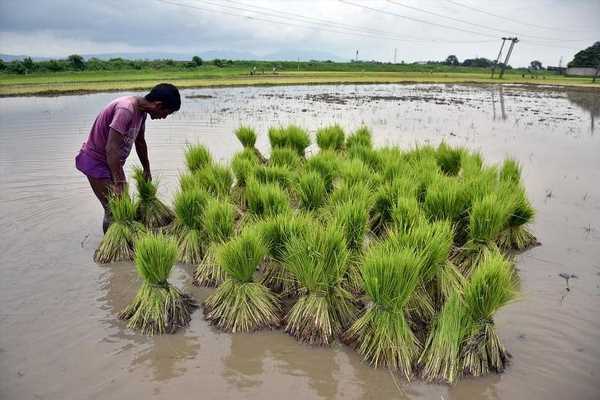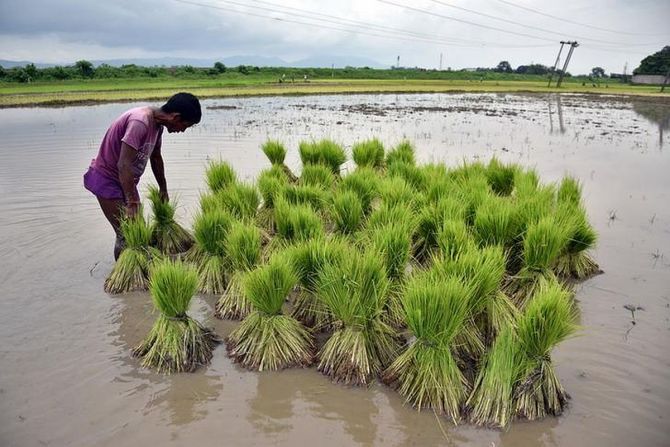Poor rains hits paddy sowing, likely to affect final rice output
Trade and market players have already started factoring in at least 10 million tonnes drop in production in rice in the kharif season as compared to last year due to delayed sowing.
The area for sowing paddy — the biggest food-grain grown during the kharif season — was almost 13.3 per cent less than the same period last year as on July 29 due to poor rains in big growing states of UP, Bihar, Jharkhand, and West Bengal.
This has raised concerns of a big impact on the final output as peak sowing season for the crop is nearing its end. Sources said trade and market players have already started factoring in at least 10 million tonnes drop in production in rice in the kharif season as compared to last year due to delayed sowing.
Last year, India produced over 111 million tonnes of rice in the kharif season. The drop in acreage has pushed up the retail price of rice, depending on the varieties, by 8-16 per cent in major trading centres.
According to the latest sowing data, as on July 29, about 23.15 million hectares have so far been brought under paddy this year, which during the corresponding period last year was around 26.70 million hectares. Usually, about 39.7 million hectares are brought under paddy during the kharif season each year.
This means that till end July around 58.3 per cent of the normal has been covered and still 40 per cent area remains unsown. The southwest monsoon between June and July 29 in eastern UP has been 53 per cent less than normal, in western UP it is 50 per cent less than normal.
In Bihar, during the same period the monsoon is deficit by 42 per cent while in Jharkhand it is less by almost 50 per cent and in Gangetic West Bengal, it is down by 46 per cent, the latest data from India Meteorological Department showed.
Overall, kharif crops have been sown in around 82.34 million hectares of land, which is just around 2.16 per cent less than the same period last year. The uptick in overall acreage has been led by pulses, cotton and oilseeds.
Meanwhile, in case of paddy, the data showed that in West Bengal paddy acreage till July 29, is around 1.06 million hectares less than last year, in Uttar Pradesh it is 0.70 million hectares, in Jharkhand and Bihar over 0.50 million hectares and in Telangana it is around 0.40 million hectares lower than last year.
Rahul Chauhan, commodity analyst at iGrain India, said rice markets have improved as rainfall in eastern India has seen a shortfall while globally there is a shortage of all grains, including rice.
The only saving grace is that unlike wheat, rice stocks in the central pool are much higher than required.
As on July 1, 2022, rice stocks in the central pool are almost 134 per cent more than the buffer and strategic stocks requirement. On July 1, 2022, rice stocks in the central pool were estimated to be around 31.5 million tonnes, much higher than the requirement of 13.5 million tonnes.
These rice stocks do not include about 23.15 million tonnes of unmilled paddy with the millers. This as and when it gets added on to the central pool stocks will mean another 15.51 million tonnes of rice for PDS and other operations of the government.
The stocks of unmilled paddy estimated about 23.15 million tonnes as on July 1 this year, is the highest since 2015, the official data showed.
Source: Read Full Article


